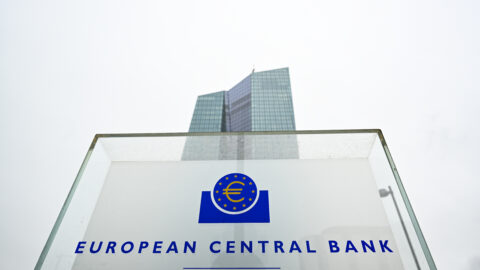The Council of the European Central Bank pulled an impressive stunt at the monetary policy meeting on 26 October. ECB President Mario Draghi announced to reduce the extremely supportive monetary policy in the near future while sounding very cautious (dovish) with regard to the process at the same time.
In response, the euro depreciated against the US dollar, share prices increased, and the yields of German government bonds and spreads for country default risk were down.
Reduction of the bond purchase programme
The most important measure is the reduction of the bond purchase programme. Until the end of 2017, the monthly volume will remain at EUR 60bn. From January 2018 onwards, it will be halved to EUR 30bn and is to run at least until September 2018.
Optimism about economic development
The backdrop for this measure is the growing optimism of the ECB about a gradual increase in inflation towards the central bank target of slightly below 2% in the medium run. Three reasons were cited: 1) economic growth in the Eurozone is robust and broadly based; 2) core inflation has already edged slightly higher (1.1% p.a. in September); and 3) the monetary policy is effective by keeping credit interest rates low.
Cautious course of action
However, economic growth is still not self-supporting, and inflation pressure is low. Therefore, a high degree of monetary support remains necessary.
Ongoing monetary support
The forward guidance, i.e. the guidance of the market participants’ expectations, is an important tool used by the central bank. In the press statement, three rules seem to apply: 1) supportive level, 2) only gradual reduction, 3) no abrupt termination.
The balance sheet of the ECB has already grown to EUR 4,400bn. In September 2014, it was still at EUR 2,000. The volume of liquidity that the ECB provides to the system is therefore massive.
The bond purchase programme will be extended until September 2018, albeit in a reduced form. If necessary, it will be extended again or even expanded. The expiring bonds will be reinvested also after the end of the bond purchase programme for as long as necessary.
The key-lending rates will remain on the currently very low level after the bond purchase programme has come to an end. This puts paid to any expectations of higher key-lending rates in 2018. An initial increase in key-lending rates is now more likely to happen at the end of 2019.
Conclusion
Economic growth in the Eurozone is strong and broadly based, but not self-supporting. At the same time, inflation is too low. This requires a moderate reduction of the very expansive monetary policy. In the short run, this environment is positive for risky asset classes such as equities. Even for credit-safe bonds such as German government bonds, the environment is not particularly disadvantageous. The risk premium for holding bonds with long as opposed to short maturities (term premium) could increase as a result of the expiry of the bond purchase programme, but the outlook for sustainably (very) low key-lending rates is supported by the variables of the scenario in place.
Unfortunately – and paradoxically – the susceptibility to (or risk of) price slumps is higher:
- An overheating economy could cause inflation to record an unexpectedly substantial increase. This would force the ECB to not only take the foot off the gas but in fact to hit the brakes.
- The TINA investment approach (“There Is No Alternative”) for risky asset classes could cause the financial market to overreach.
Legal note:
Prognoses are no reliable indicator for future performance.
Legal disclaimer
This document is an advertisement. Unless indicated otherwise, source: Erste Asset Management GmbH. The language of communication of the sales offices is German and the languages of communication of the Management Company also include English.
The prospectus for UCITS funds (including any amendments) is prepared and published in accordance with the provisions of the InvFG 2011 as amended. Information for Investors pursuant to § 21 AIFMG is prepared for the alternative investment funds (AIF) administered by Erste Asset Management GmbH pursuant to the provisions of the AIFMG in conjunction with the InvFG 2011.
The currently valid versions of the prospectus, the Information for Investors pursuant to § 21 AIFMG, and the key information document can be found on the website www.erste-am.com under “Mandatory publications” and can be obtained free of charge by interested investors at the offices of the Management Company and at the offices of the depositary bank. The exact date of the most recent publication of the prospectus, the languages in which the fund prospectus or the Information for Investors pursuant to Art 21 AIFMG and the key information document are available, and any other locations where the documents can be obtained are indicated on the website www.erste-am.com. A summary of the investor rights is available in German and English on the website www.erste-am.com/investor-rights and can also be obtained from the Management Company.
The Management Company can decide to suspend the provisions it has taken for the sale of unit certificates in other countries in accordance with the regulatory requirements.
Note: You are about to purchase a product that may be difficult to understand. We recommend that you read the indicated fund documents before making an investment decision. In addition to the locations listed above, you can obtain these documents free of charge at the offices of the referring Sparkassen bank and the offices of Erste Bank der oesterreichischen Sparkassen AG. You can also access these documents electronically at www.erste-am.com.
Our analyses and conclusions are general in nature and do not take into account the individual characteristics of our investors in terms of earnings, taxation, experience and knowledge, investment objective, financial position, capacity for loss, and risk tolerance. Past performance is not a reliable indicator of the future performance of a fund.
Please note: Investments in securities entail risks in addition to the opportunities presented here. The value of units and their earnings can rise and fall. Changes in exchange rates can also have a positive or negative effect on the value of an investment. For this reason, you may receive less than your originally invested amount when you redeem your units. Persons who are interested in purchasing units in investment funds are advised to read the current fund prospectus(es) and the Information for Investors pursuant to § 21 AIFMG, especially the risk notices they contain, before making an investment decision. If the fund currency is different than the investor’s home currency, changes in the relevant exchange rate can positively or negatively influence the value of the investment and the amount of the costs associated with the fund in the home currency.
We are not permitted to directly or indirectly offer, sell, transfer, or deliver this financial product to natural or legal persons whose place of residence or domicile is located in a country where this is legally prohibited. In this case, we may not provide any product information, either.
Please consult the corresponding information in the fund prospectus and the Information for Investors pursuant to § 21 AIFMG for restrictions on the sale of the fund to American or Russian citizens.
It is expressly noted that this communication does not provide any investment recommendations, but only expresses our current market assessment. Thus, this communication is not a substitute for investment advice.
This document does not represent a sales activity of the Management Company and therefore may not be construed as an offer for the purchase or sale of financial or investment instruments.
Erste Asset Management GmbH is affiliated with the Erste Bank and austrian Sparkassen banks.
Please also read the “Information about us and our securities services” published by your bank.


